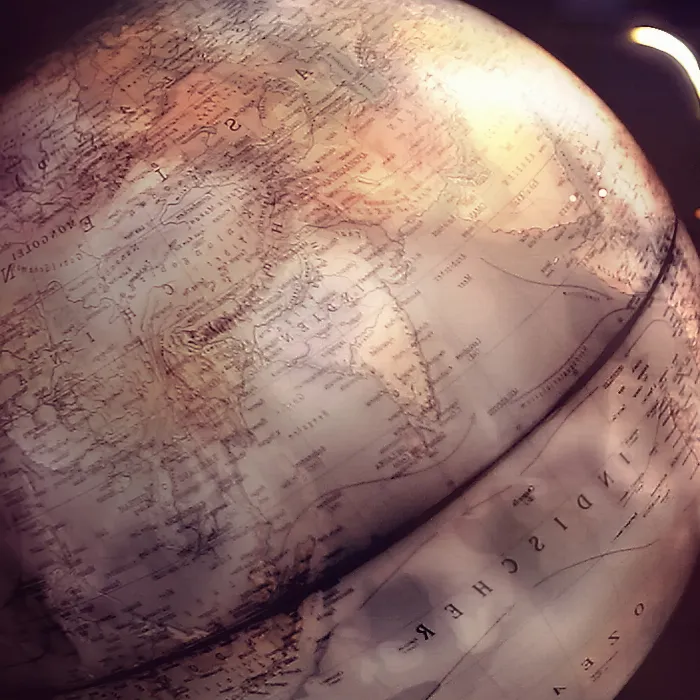You want to create effective 3D animations and use the 3D Camera Tracker in After Effects? This tutorial focuses on the creative use of the 3D Camera Tracking tool to track a rotating globe. We'll show you how to use the tracker so that you can achieve impressive results even with a moving object and a static camera. Get ready to learn the basic steps of 3D animation and elevate your project to the next level.
Key takeaways
- The 3D Camera Tracker can also be used when only the object is moving, not the camera.
- The effective selection and optimization of 2D tracking points is crucial for the result.
- Sometimes it's necessary to manually adjust or remove tracking points to achieve better results.
Step-by-step guide
To start the project, begin by preparing your workspace in After Effects.
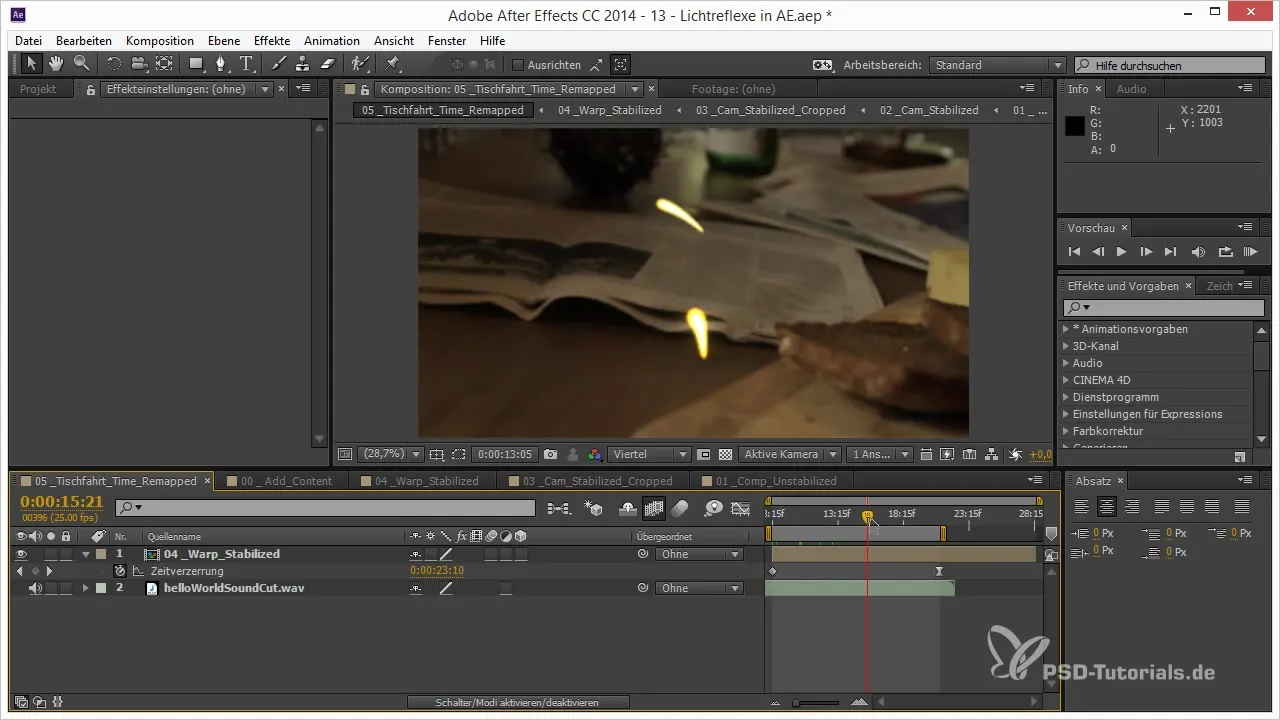
Create a new folder where you can organize all Cinema 4D objects and light sources.
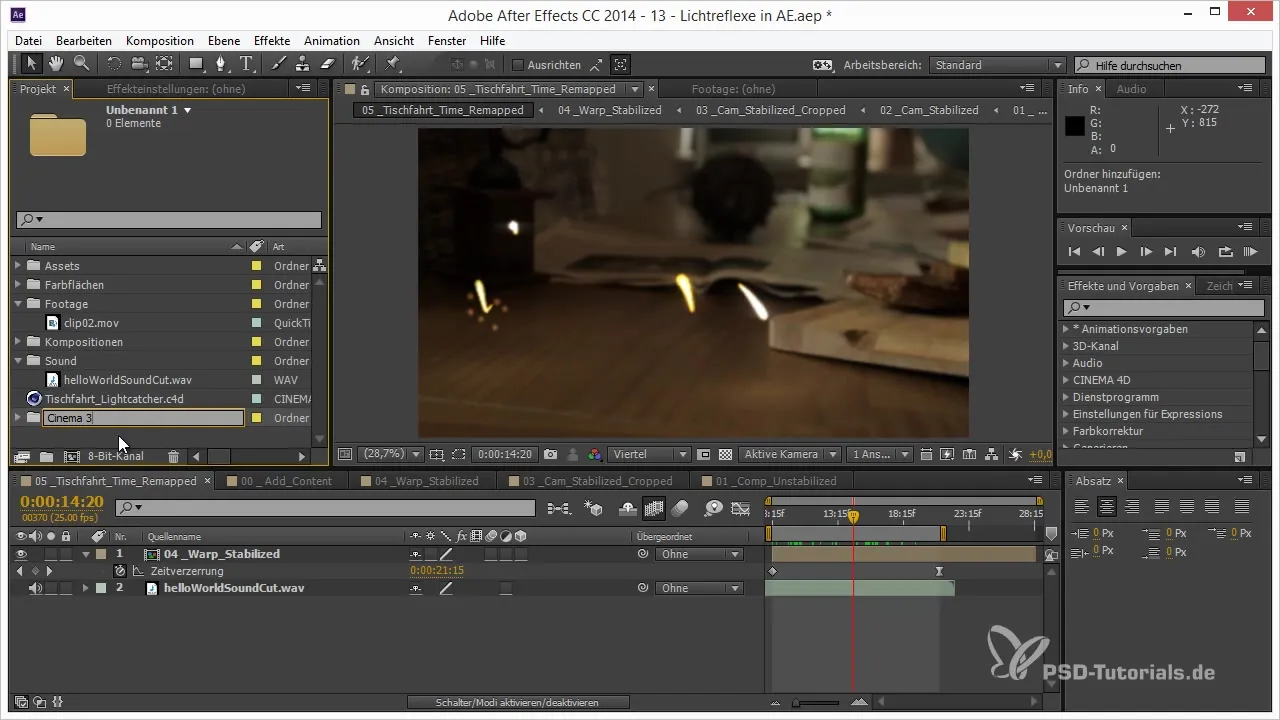
In the next step, import the globe clip available to you in the project files. Look for "Clip 01" and import it into your working environment.
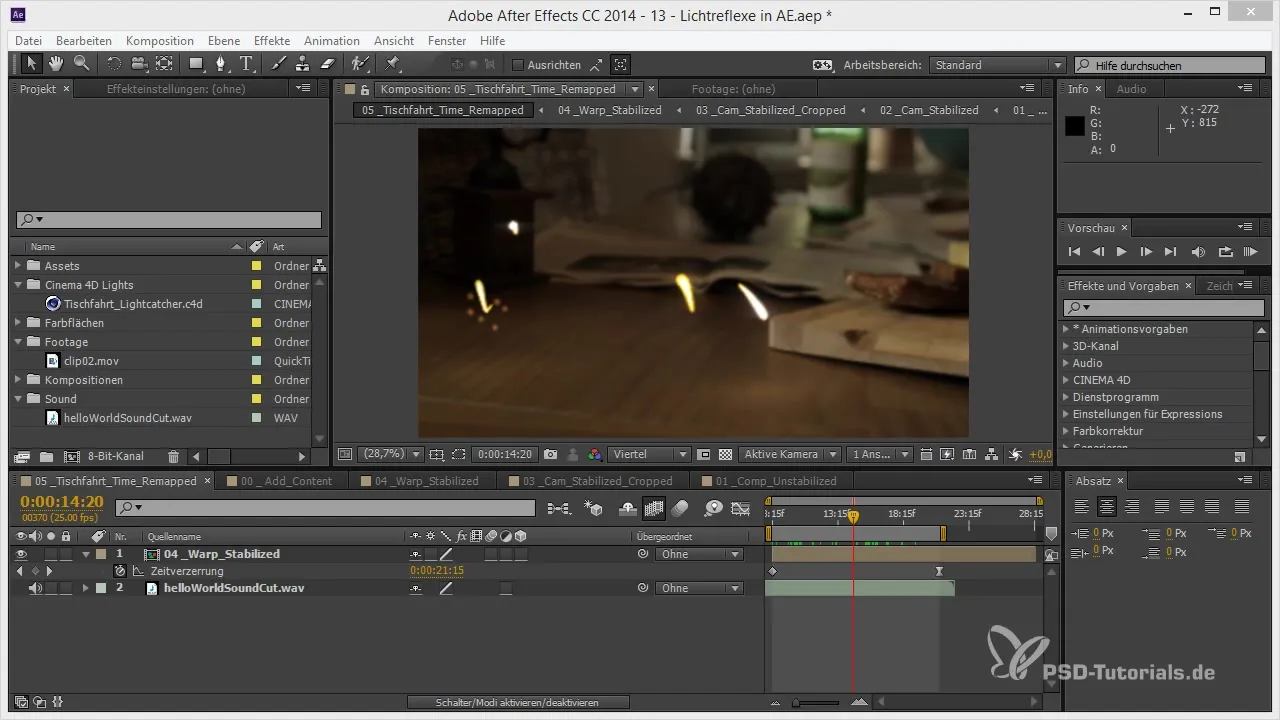
Now it’s time to create a final composition. Drag the desired sound clip “Hello World” into your composition and ensure the dimensions are in full HD quality (1920 x 1080).
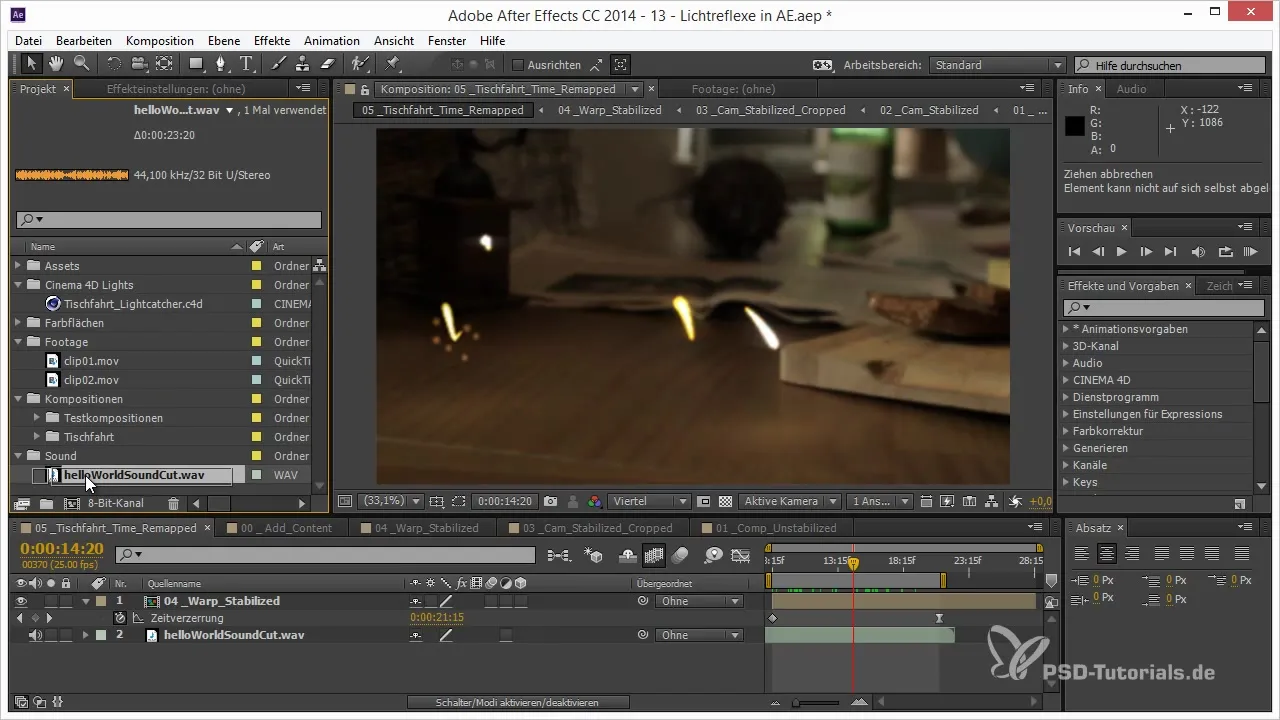
After the first composition is created, drag the table movement animation in front of the globe clip to ensure a smooth transition.
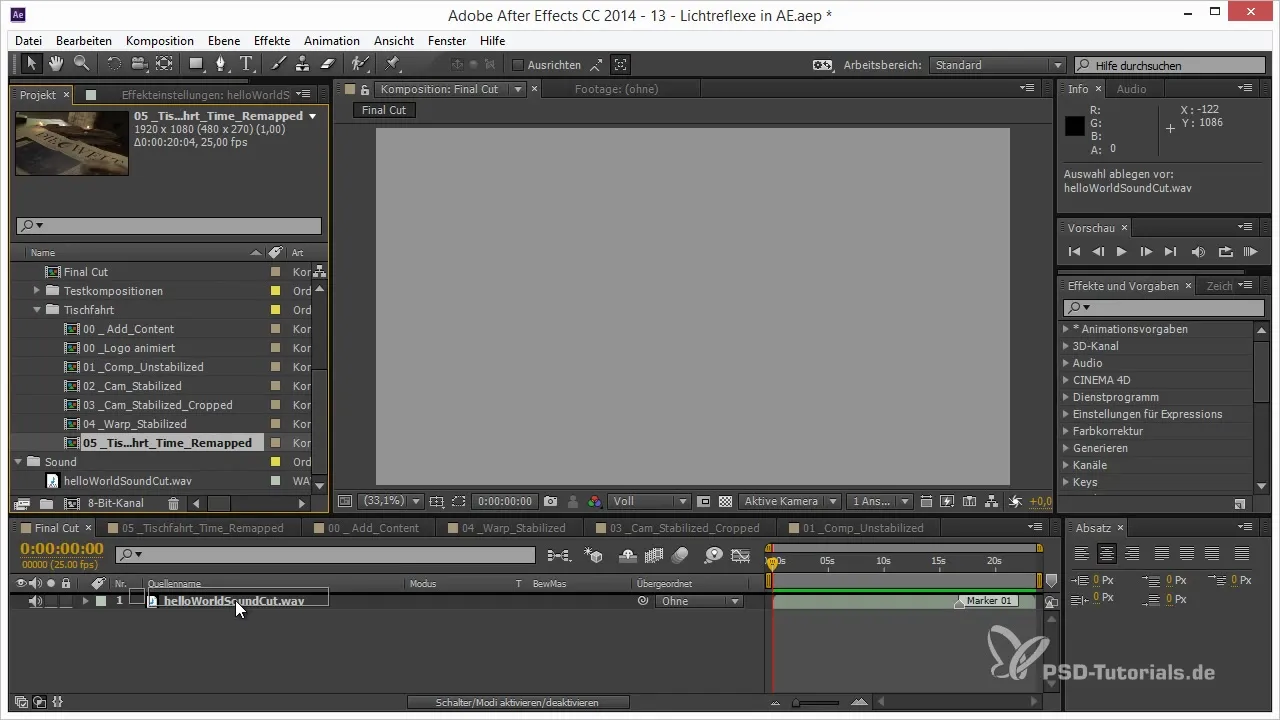
Now it's time to create a new sub-composition for the globe. Press the keys “Ctrl + Shift + C” and name the composition “Final Globe”.
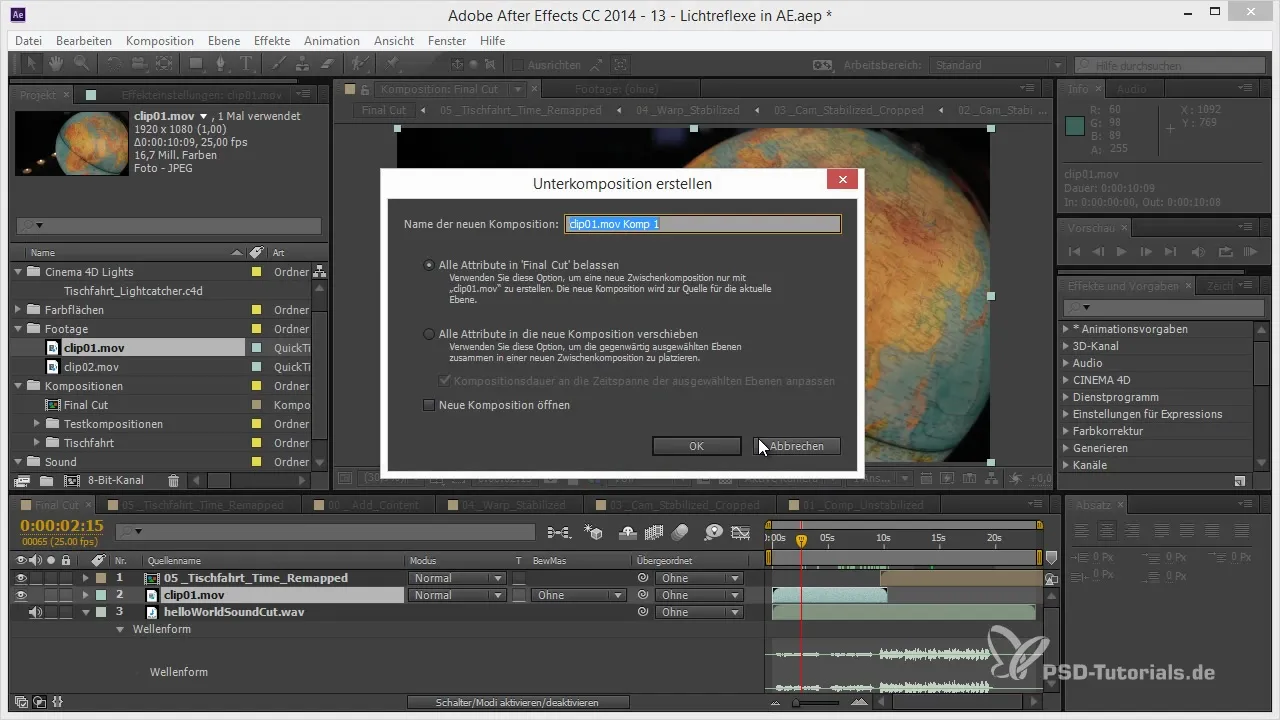
Now switch to the “Final Globe” composition. You will enable the 3D Camera Tracker. To do this, apply the tracker to the globe clip.
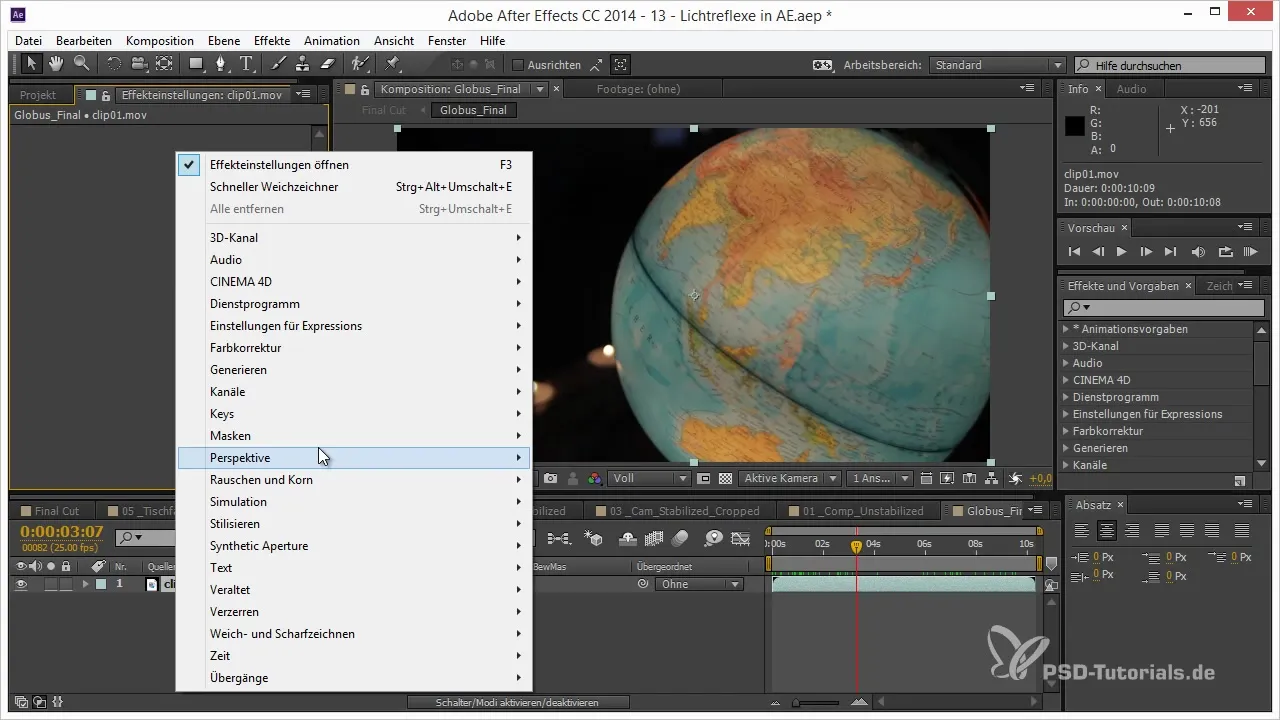
Before you start tracking, remember: only the camera can move while the scene remains static. The challenge is to make the tracker create the illusion that the object is moving while the camera stays stationary.
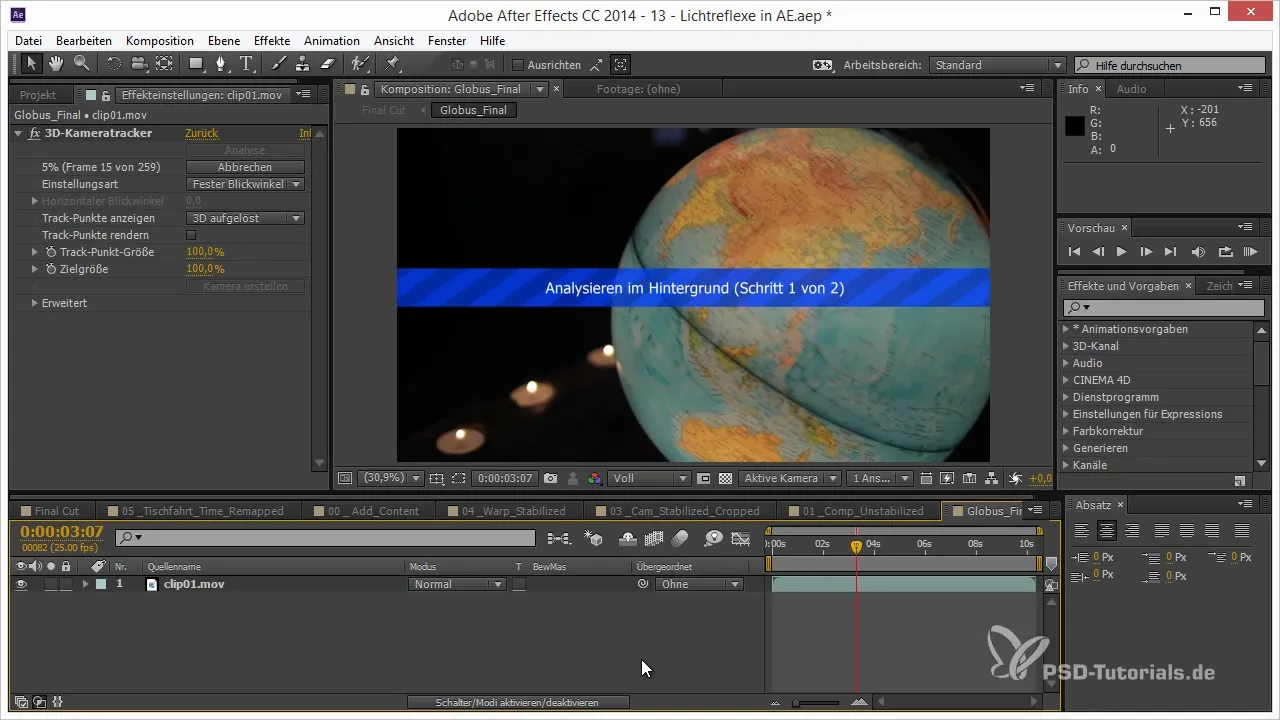
Start the 3D Tracker and observe the process. The tracker analysis may fail as not all points are tracked correctly.
Check the resulting 2D tracking points in the composition window. You will see that some points remain in the same place, which is problematic for the tracker.
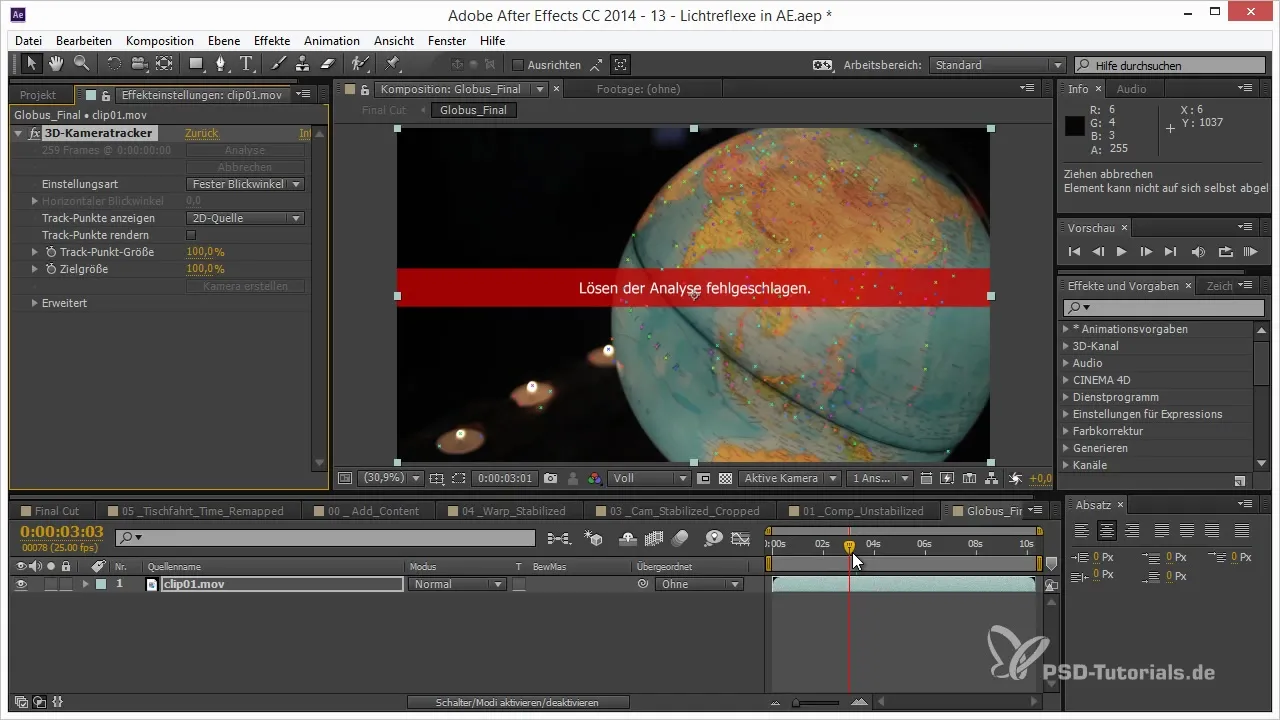
To improve the analysis, you need to manually remove unwanted tracking points. Select the points that do not contribute to the globe's movement and press the delete key to remove them.
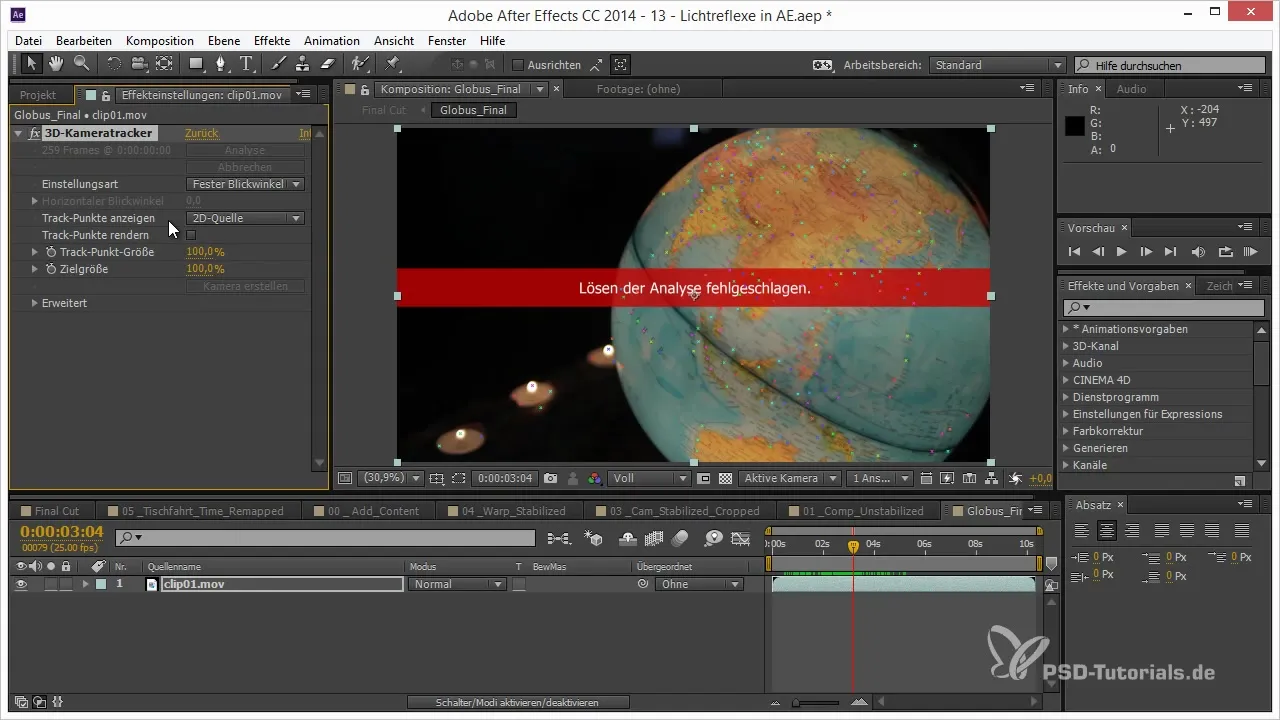
After you have removed the problematic points, the tracker will automatically try to find better tracking points. Ensure that the average error is below 1 pixel for optimal results.
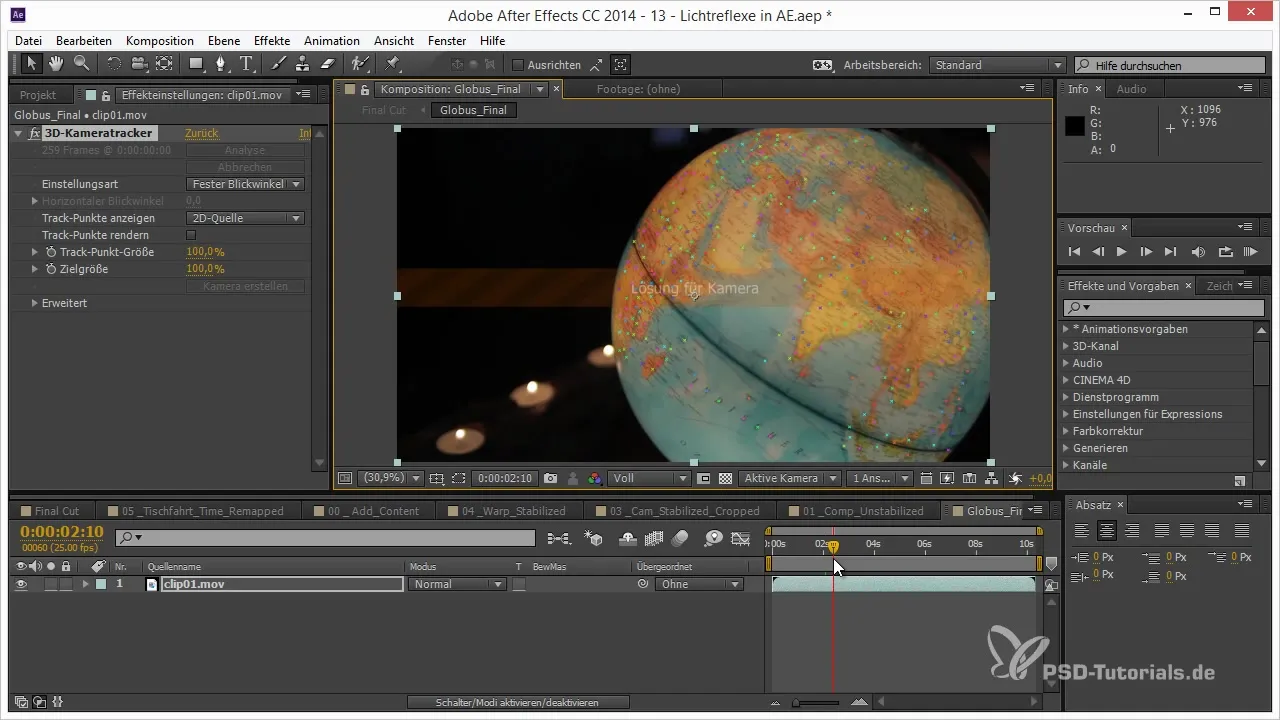
If the reprojection error is now 0.43 pixels, that’s an excellent result. You can now position the camera at an appropriate spot and take a look at the animation.
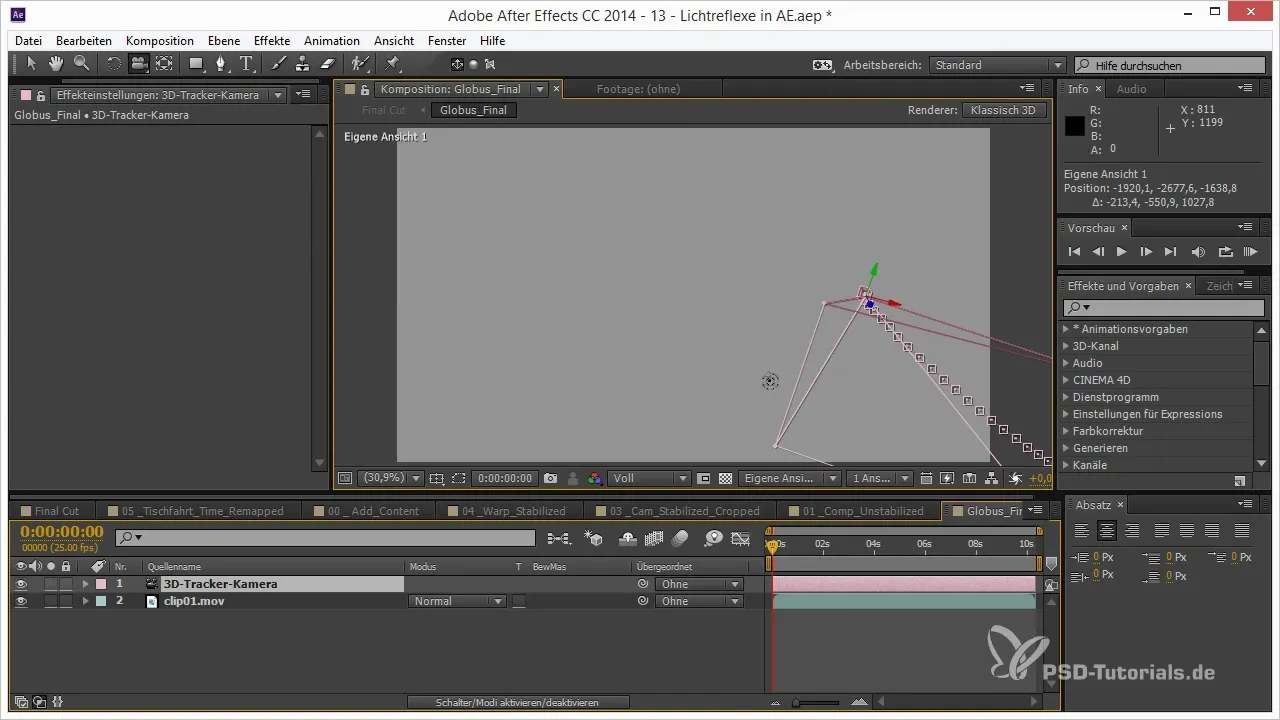
Capitalize on the illusion of camera tracking; the animation should show the camera moving in a semicircle around the globe, even though it actually remains static.
With these steps, you have successfully implemented 3D tracking for your globe clip in After Effects. Experiment with further settings and refinements to perfect your animations.
Summary – 3D Tracking for the Globe in After Effects
In this tutorial, you learned how to use the 3D Camera Tracker in After Effects to effectively track a rotating globe and achieve interesting visual effects.
Frequently Asked Questions
How does the 3D Camera Tracker work in After Effects?The 3D Camera Tracker tracks the movement of the camera and the position of objects in the scene to create 3D animations.
Can I also use the tracker if only the object is moving?Yes, you can set the tracker to create the illusion that the camera is moving around a static object.
How do I improve the quality of the tracking?Make sure to remove unwanted tracking points and ensure the average error is below 1 pixel.
What to do if the tracker does not perform an analysis?Check the position of the tracking points and ensure that only the object is moving while the camera remains static.
Can I also use the 3D Camera Tracker for other objects?Yes, the 3D Camera Tracker can be used for various objects and animations as long as the basic requirements are met.
